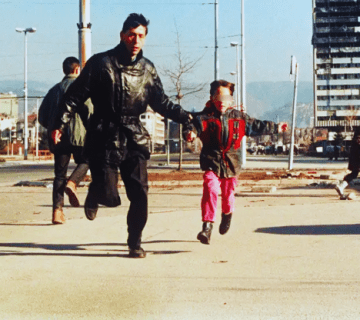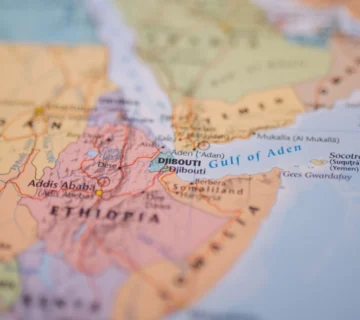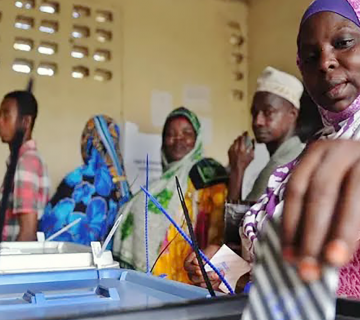When I boarded my flight to China a few weeks ago, I carried with me the same skepticism many Kenyans feel toward major government projects, particularly the expansion and modernization of Jomo Kenyatta International Airport (JKIA) through a partnership with India’s Adani Group. The shared cynicism extended to the Housing Programme, toll roads, a modern convention center at Bomas, a modern commuter or metropolitan rail network in Nairobi, Talanta stadium and “green initiatives” – the 15 billion trees by 2032 and Nairobi rivers regeneration. Like many, I wondered whether such projects truly served the people or merely elites. The word “transformation”, so often used by President Ruto, sounded hollow or euphemism for corruption. But my visit to China completely changed my perspective.
Chinese Modernization and Xi Jinping’s Vision
I travelled through Changsha and stayed in Beijing and later, Chongqing – a metropolis of about 32 million residents, the second largest in the world. In a city 8 times Nairobi’s population and over 100 times larger in size, I experienced something unimaginable in Nairobi – no traffic jams. The longest I waited in traffic was three minutes. Why? China has built an interconnected transport ecosystem: multi-level highways, extensive subway lines, and commuter railways linking airports and cities to towns in minutes like clockwork.
High-speed trains covering over 40,000 kilometers nationwide, connect provinces at speeds exceeding 300 km/h and reducing travel time by 40 – 45 percent. For example, the world’s longest railway line reduced travel time between Beijing and Guangzhou from 20 hours to 8 hours, Hong Kong to Beijing from 24 hours to 12 hours and Xi’an to Chengdu from 16 hours to 3 hours. The airports in China are cities in themselves—expansive and modern, handling global cargo and millions of travelers with maximum efficiency. Roads are smooth and massive bridges arch across rivers like works of art. Every construction project feels part of a grand national design.
But China’s modernization is not just about infrastructure—it is also about dignity, efficiency, and productivity— in line with Chinese President Xi Jinping’s philosophy of people-centered progress. Modernization with a human face, and governance rooted in public interest. China has lifted over 800 million people out of poverty in just four decades, boasts over two-thirds of the world’s total high-speed rail network – and urban green cover exceeding 45 percent. Compare that with Nairobi, where traffic jams swallow hours daily and choke productivity. But the difference is not accidental—it is engineered. China’s intermodal transport systems, robust public transit, and green urban planning are deliberate investments that fuel economic productivity and improve quality of life.
Kenya’s Development Protests: A Crisis of Trust, Not Policy
Returning home, I understood that Kenya’s problem is not bad public policy—it is mistrust. The disconnect is attributable to a history of grand corruption, inadequate public participation and civic education, propaganda and poor communication. The protests which sunk the JKIA – Adani deal, was borne out of such mistrust and information deficits. But a new and modern JKIA, would not just be a terminal—it would be an engine of global connectivity, boosting jobs, tourism, trade, and regional competitiveness. Ethiopia’s Bole International Airport and Rwanda’s Bugesera Airport are expanding fast, positioning Addis Ababa and Kigali as regional aviation and commercial hubs. Kenya risks losing its status as East Africa’s gateway.
Similarly, the Affordable Housing Programme, meant to deliver thousands of new homes and create jobs, faces constant resistance. Yet, over 60 percent of urban Kenyans live in informal settlements, many without sewer systems or clean water. Rural dwellings remain largely semi-permanent or grass-thatched huts, with millions lacking electricity or sanitation. To be fair, the Housing Programme requires re-engineering of the model to meet the desired social impact. China faced similar challenges in the 1980s but transformed them through planned urban housing and public works—creating jobs, improving health, and spurring local industries. If China can provide decent housing for 1.5 billion people in about 40 years, Kenya’s 50 million population should not take too much friction and time!
Lessons in Clean, Green, and Sustainable Growth
One of the most profound impressions from my China visit was the country’s green revolution. From the sky, all you see are the skyscrapers in Chinese cities, but on touch-down, you are canopied. Every idle public space is covered in grass, trees, or flowers and the streets are spotless. Drainage systems work, as does waste management.
By contrast, our cities are choking on filth. Raw sewage flows into Nairobi’s rivers, garbage piles line market streets, and open drains breed disease in informal settlements. I reflected on President William Ruto’s green initiatives—planting 15 billion trees by 2032 and regenerating Nairobi’s rivers—is therefore timely and essential. These are not cosmetic initiatives; they are the foundations of sustainable cities and economy. His declaration of a national tree-planting day, which falls this Friday, shows intent. But intent alone is not enough. There is need to rally public participation, emulate China’s strategy-guided green revolution, civic discipline, and integration of environmental consciousness into daily life.
Public-Private Partnerships: The Pragmatic Path Forward
Kenya’s fiscal space is tight, with USD 100 billion GDP, a ballooning debt to GDP ratio of 67 percent, limited revenue and significant budgetary deficits. The government simply cannot finance mega-infrastructure projects alone. The public-private partnerships (PPPs) are not a surrender to corporate interests or privatization perse—they are strategic partnerships for public good. The Adani Group’s involvement in JKIA modernization, if properly structured and transparently executed, could help Kenya achieve the connectivity and efficiency I witnessed in China. Similar modernization outcomes can be achieved in other sectors using the PPP model.
Modernization elevates a nation’s dignity and its people’s living standards, while PPPs make it cost-effective. President Ruto’s call for transformation—though ambitious and sometimes unpopular—is rooted in the same logic that propelled China’s rise.
Modern airports, green cities, mass transit systems, housing programs, convention centers, and modern sports facilities are not luxuries—they are levers and scaffolding of modernization. JKIA, KICC, Matatus and Slums are not iconic heritage but symbols of stagnation! Kenyans must not be afraid to modernize, but must be afraid of being left behind.
The Road Ahead: Winning Public Trust
At the heart of public mistrust, are poor communication and corruption. The Kenyan government must invest in strategic communication to bridge the gap between vision and understanding. Kenyans must understand the “why” and “how”—not just the “what”. The government must move beyond influencer-style hype and build robust, transparent and civic-minded engagement. Citizens must be educated on how these projects align with their daily struggles: jobs, incomes, housing, health, transport, and environments. Such intersectionality cannot be left to “influencers” to communicate.
Corruption must be confronted head-on to rebuild trust. And Kenyans need to see not just the cost of projects—but their value. In my hotel room in China, I watched President Xi Jinping, senior government officials and political party officials, robustly engage the public on the modernization agenda.
The Bottom-line
I now see our protests differently. They reflect not opposition to progress, but a failure to communicate the promise of transformation, and clear engagement with the public. But whether it is Adani at JKIA or UK firms in Nairobi commuter rail, these ventures can unlock growth without burdening the exchequer. Today, I see these projects as deserving of public support and as the foundation of Kenya’s future—our gateway to global competitiveness, sustainable cities, and a dignified life for every citizen.
Photo Credits: Edmond Pamba



